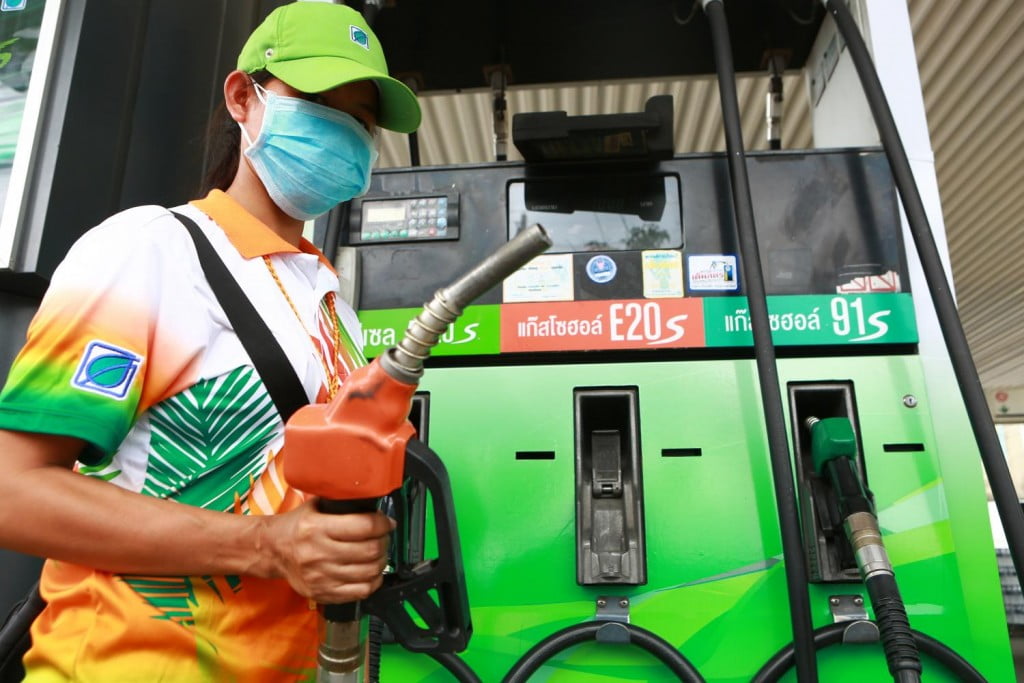In this edition of Automobile Technology Content, we have brought an extremely significant topic for you. The theme of Ethanol-blending has been in the news recently. We shall take a look at what the technology behind it is, what the process and challenges associated with that are and how India plans to achieve the target of 20% Ethanol-blending by 2025. If you want the latest news from the world of the automobile industry make sure to head to Car Blog India. Also, visit the Automobile Technology Section directly to read interesting themes related to automobile engineering.
Also read: Types of Alternative Fuels for Cars – CNG, LPG, Bio-Fuels, Methanol, etc!

What is E20?
E20 refers to the mixture of petrol and ethanol in a specific quantity. In the case of E20, 20 denotes the percentage of Ethanol mixed with gasoline. Essentially, the number signifies the percentage of Ethanol in petrol. India currently uses about 8.5% Ethanol blend with petrol which is already the highest that we have been. The aim is to have fuels with a 10% Ethanol blend by 2022. And by 2025, the 20% Ethanol mix is what the Government aims to achieve. Ethanol is produced by Biomass, which means that it doesn’t require crude oil. The crops like Corn and Sugarcane are the primary sources of extracting Ethanol. India grows corn and sugarcane in large quantities already. That can enable higher percentages of Ethanol in cars in the future.
Also read: Regular Fuel vs Premium Fuel – Should you use Premium fuel for you car?
Advantages of E20 (or Ethanol-Blended Fuel)
A natural question arises, why is E20 used in cars? What are the advantages of it? Let us discuss this in a bit more detail. So, India wants to reduce its dependence on crude oil supply from the Gulf countries. Currently, a massive chunk of our crude oil requirements is fulfilled by imports from these countries. Increasing the percentage of Ethanol in fuel will reduce the imports required to fulfill our needs. As mentioned in the last paragraph, India aims to increase the production of Ethanol by making use of the surplus production of corn and sugarcane. This requires the sugar mills to enhance their production capacities as well. Once we achieve all this, there are various advantages to using Ethanol blend for our mobility.
Also read: What is Air Suspension – Uses of Soft and Stiff Springs!
- The main advantage is the reduced dependence on natural non-renewable resources which are rapidly depleting.
- The emission regulations are also becoming ever more stringent with each passing year as Governments across the globe aim to achieve various environmental targets to curb pollution. Vehicular pollution is among the chief factors for air pollution after industries. Ethanol-blended petrol burns much cleaner compared to pure gasoline.
- Sticking to vehicles, the Ethanol addition to petrol can increase its Octane Number significantly. This essentially translates to knock-resistant fuel. This means that the petrol engine can have higher compression ratios, which means that the overall efficiency of a petrol engine could be improved. This will reap benefits across various aspects.
- Advanced ignition timings as a result of knock-resistant characteristics of Ethanol-blended fuel means improved performance of the cars.
- India already produces a lot of corn and sugarcane and ramping up the production of Ethanol should not be a problem for India upto a certain volume.
Also read: Uses of a 48V Hybrid System – Regenerative Braking, Turbo Boost, Fuel Economy and more!
Disadvantages of E20 (or Ethanol-Blended Fuel)
There are some challenges to implement this technique as well. Let us take a look at what these are one by one.
- The energy density of the Ethanol-blended fuel is lower than its pure gasoline counterpart. This means that the output and fuel economy can have a slightly negative impact. Therefore, some calibration techniques have to implemented to reduce this effect.
- Ethanol is highly water absorbent which can lead to corrosion inside some components of the engine. When used in higher concentrations (E20 or higher), there might be some modifications required to the engine and components.
- One has to be careful that the crops for Ethanol are grown on lands that are not used for food production. When the requirement for Ethanol is increased, there might not be enough cultivated land for the production of Ethanol. That is also something to be mindful of.
Also read: Types of Turbos – VGT, Sequential, Twin-Turbo, Twin-Scroll, E-Turbos and more!
What are Flex-Fuel Vehicles?
There are also discussions going on regarding the manufacturing of flex-fuel vehicles. Essentially, a flex-fuel vehicle has already modified engine construction to accommodate any percentage of the mixture of Ethanol and Fuel. It can run either on pure petrol, pure Ethanol or any combination of the two. Countries like Brazil and the US, have a long history of flex-fuel applications. These countries have already been using E85 fuel for their vehicles signifying 85% of Ethanol blend. That target could still be some distance away from us at the moment because only a few states in India currently offer E10 fuel for the vehicles. Getting the E10 fuel across the board is the first hurdle that the Government aims to achieve by the end of 2022. After having achieved that, we can start concentrating on E20 by the end of 2025.
Also read: What are Intercoolers – Types and Working!
Challenges for achieving E20 by 2025
The Indian Automobile Industry was already going through a difficult phase because of the implementation of BS6 emission norms. Just as the industry seemed to be recovering from that, the pandemic struck and we are witnessing the aftermath of that even today. India is also focussing intensively on Electric Vehicles and there is a strong push towards that as well. There are a few carmakers that sell a relatively good amount of CNG-powered vehicles as well. In the middle of all this, it could be extremely challenging for the OEMs to adopt this technology because there have to quite a few changes needed to be for the implementation of E20. It could be a challenge and confusing state to dedicate resources and time to all these technologies at the same time. Therefore, achieving E20 by 2025 across the board has its own challenges and issues which need to be addressed and resolved.
Also read: Main Components of a 4-Stroke IC Engine – Pistons, Valves, Camshafts, Turbos, etc!
Image Source: Inventiva


